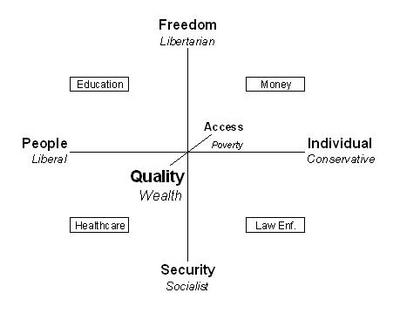REG-A-NATION
Consider the 2008 Economic Crisis:
A. When the Ratings Agencies (Moody, Standard & Poor, etc.) were de-regulated and, thus, allowed to market themselves directly to bond issuers (Lehman Bros., Morgan Stanley, etc.), they won contracts by guaranteeing "AAA" ratings.
B. These bogus "AAA" ratings created a demand for more bond securities, specifically mortgage backed securities (bundled mortgages).
C. This mortgage backed security demand lowered the guidelines for home loans, so more could get in the system -- such zero-down adjustable loan offers were not only taken by those who sought to live beyond their means or pay down debt through refinance, but they were also taken by speculators who quickly ramped-up to create the "real estate flip" market.
D. This ticking time-bomb of people who got zero-down loans with a future interest-rate hike adjustment, blew-up when the real estate market bubble burst: when people could no longer sell (or refinance) their properties at a better rate before their loan-rate adjusted. Thus, many defaulted because their properties were worth less than what they owed.
E. Seeing the potential of such a time-bomb exploding, mortgage backed securities issuers (Lehman Bros., Morgan Stanley, etc.) protected their positions by obtaining insurance: entering into credit default swap agreements.
F. Because the credit default swap market was not regulated as insurance (no capital reserve required by issuer), it became its own bubble market, resulting in bond issuers protecting themselves over and over and over again to the tune of $60 trillion, for a total of $12 tillion in market debt.
G. So, when the real estate bubble burst and, thus, home owners (mostly speculators) could not make their payments, the mortgage holders could also no longer meet their obligations and, thus, called in their credit default swap agreements. However, as such was leveraged 5:1 (for every $1 lost, $5 was due), there was not enough capital to fulfill the agreements.
H. Thus, the credit crisis resulted because every bank then hoarded their cash in fear that either their loan may not be paid back or that they themselves may need the liquidity if (in fact) the credit market seized up -- a self-fulfilling prophecy.
I. Therefore, banks that found themselves short on cash could no longer meet their daily reserve requirements with short-term loans from other banks. Thus, they (Washington Mutual, Wachovia, etc.) began to default and were forced to either to sell to banks with cash (Bank of America, Wells Fargo, etc.) or go bankrupt -- thankfully, the Fed Reserve agreed to make these short-term bank loans.
J. Finally, to prevent a total melt-down, the Federal Govt. offered to buy-up $700B of the worst $12T debt (the mortgage backed securities) because the Govt. can afford to sit on the properties for 5-20 years until the market restabilizes.
In this light, once (1) the over-valued mortgage backed securities are off the books of the surving banks, (2) the ratings agencies are re-regulated so they can no longer market themselves with bogus high-rating guarantees, and (3) the credit default swap agreements are regulated for what they are (insurance that requires a capital reserve), then the banks won't be so afraid to loan again, as well as will be able to borrow again.
However, to fully stabilize the markets…
What if Mark-to-Market valuation was replaced with a Historical Average valuation model. In other words, banks/institutions could book an average value of a security’s performance on their balance sheets, as opposed to its last trade value. This will prevent bankruptcies and erase a significant systemic problem: the valuation of suddenly unpopular securities. In regards to the 2008 crisis, a mortgage backed security has a value, even if no one wishes to buy it today: the value is the value of the home, which is: more than $0, and less than the highest trade price.
Therefore, if (for example) a mortgage backed security is allowed to be claimed at the average value of its previous year of trading, then its value on a day that no one wants it would be $0 for only 1 of 365 days and more than $0 for the other 364 days. This will lower the value of the security incrementally and, thus, slow its decline, preventing an instant collapse and panic. Thus, the new rule will give such security holders time (in this example, one year) to shore-up the declining value.


